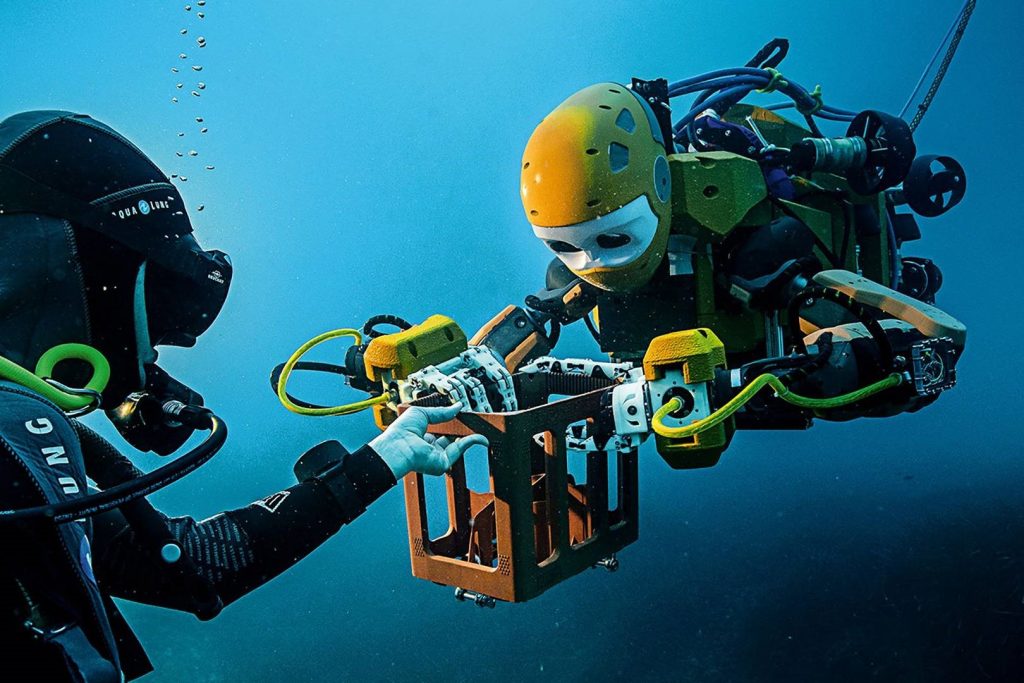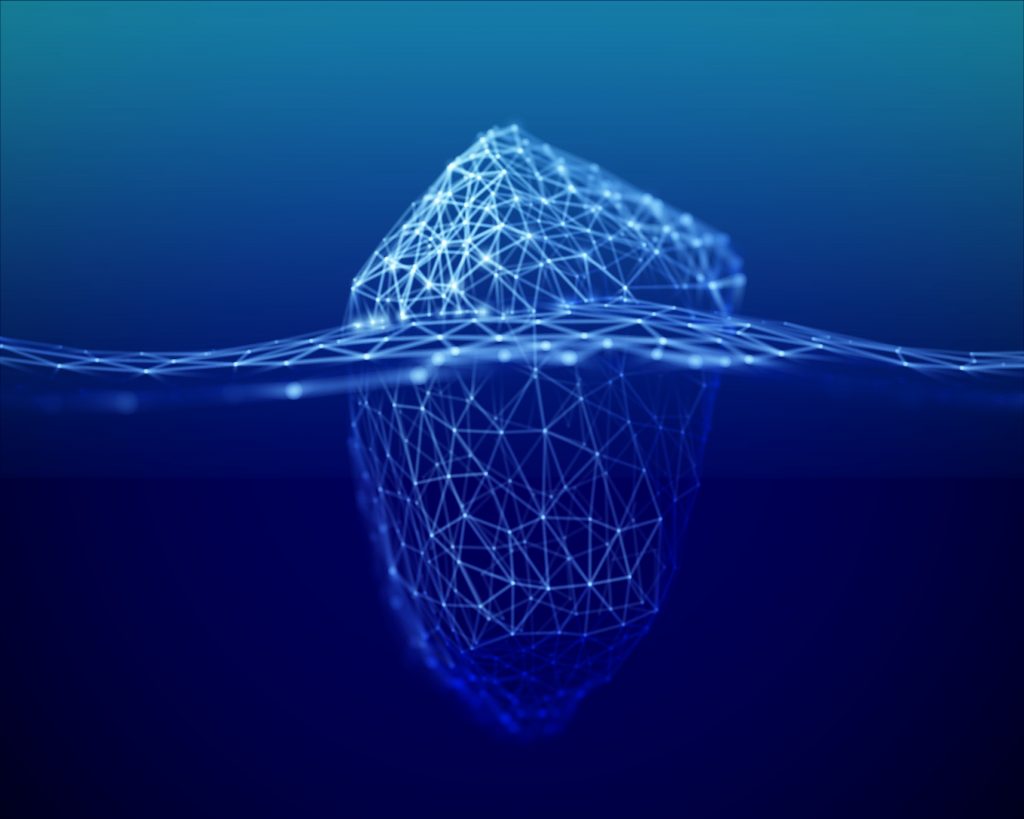Robots in the ocean. Are we really surprised? I mean, some of the things that robots can do nowadays are incredible. And as the relationship between artificial intelligence, machine learning, and climate change technologies is explored, robots’ roles in traveling through a relatively unexplored part of our planet expands. So how are machine-learning and artificial intelligence developing in this blue frontier? Let’s take a look at some of the AI inventions exploring the deep blue sea.

Ocean Surveying
Robots have been assisting ocean surveyors in the past decade by following pipes and cables with cameras, helping to identify potential leaks or breaks so that they could be fixed. However, by bringing in the element of AI, companies like Rovco, hope to ‘train’ these robots to make decisions. These AI-enhanced robots would dramatically decrease the need for physical humans and boats traveling to collect data, a costly and sometimes physically taxing process. When projects like offshore wind farms are started, ocean surveyors have to go in and look for potential setbacks, like unexploded World War II bombs, dismantle old infrastructure and replace it with new materials, and create maps. The AI autonomous underwater vehicles (AUVs) that Rovco has been developing for years could inspect these areas, and if they observe something odd, could decide to take a closer look and send that information back to humans onshore or on a nearby vessel. They could also make up-to-date maps of pipelines and underwater cable networks to make repair easier. Learn more about this specific program on the BBC here.
Marine Life Tracking
As we saw with the ICARUS program, satellites and machines in space are already proving to be very effective in observing massive amounts of data on animal migration patterns and numbers. This applies to the marine life migration as well, as the New York Times explained. “Machine learning and artificial intelligence applications are proving to be especially useful in the ocean,” they write, “where there is both so much data – big surfaces, deep depths – and not enough data – it is too expensive and not necessarily useful to collect samples of any kind from all over.” Scientists are releasing machine-learning sensors to record data on everything from blue whale migration to zooplankton and microplastic hotspots. Learn more about these projects here!
Data Aggregation
As mentioned above, one of the most difficult parts of studying the ocean and marine ecosystems is that there is simply so much data and so many different types being recorded, that it is hard to sort through it all. That’s where AI startups like Sinay comes in. These data aggregators are combing through “over 6,000 sources ranging from IoT sensor data that measure water quality, wave and weather data, shipping vessel locations, and ocean acoustic.” From there, machine learning algorithms take control. They analyze the data, sort through it by making decisions on which data should be allocated where (such as environmental risks to specific areas in one place and increasing operations for vessels in another) and plug this information into condensed and usable models. Then, when the information is needed, researchers and scientists have what they need to make predictions, protect coral reefs and marine life, harness new types of renewable energies, and have a foundation to look into less-covered issues like ocean acoustic pollution. Read more about these AI startups at Forbes.
Crime Fighting
Yes, you read that correctly. Researchers are looking into ways that artificial intelligence can help identify where major marine crime, like illegal fishing, is going unregulated. That’s why organizations like Global Fishing Watch are hoping to use new technologies, like artificial intelligence, remote sensors, and machine learning to increase the transparency of marine practices and the virtually unknown activity that occurs out in the wide expanse of the seas. In an article for the New York Times, David Kroodsma, the director of research and innovation with the Global Fishing Network explained how new technologies could promote sustainability.
“The oceans are a pretty exciting place to work in big data because there’s so much opportunity for improving data, which, in fisheries has historically been very poor, especially when you compare it with other extractive industries. Twenty percent of fishing is illegal, unreported or unregulated. What if we didn’t know where 20 percent of the forests were, or carbon emissions?”
David Kroodsma, in an interview with the New York Times
Identifying New Marine Organisms and Endangered Species
Artificial intelligence, like the AI program developed by North Carolina State University, now has the capacity to “automatically provide species-level identification of microscopic marine organisms.” Not only could these programs provide an encyclopedia of information on marine ecosystems dating through the centuries, but they could also be a reference to identify new species, endangered species as a result of climate change, and make advances in medicinal and herbal species identification in the ocean. Robots, regardless of their being operated by humans directly or not, have the capacity to go deeper than humans can in less time.

Research in artificial intelligence and machine learning is growing, as is an interest in understanding and protecting marine ecosystems. But AI has a long way to go before it can be fully utilized and trusted. Technology innovators and ethicists are in constant debate over the ramifications of decision-making technologies and the biases built into algorithms that are then passed off as ‘objective’. And ‘training’ machines to make decisions on which data sets are ‘important’ and how they should be represented is still in the initial stages of our understanding. However, many computer scientists and marine researchers alike hope that one day, artificial intelligence like robots in the ocean can make an immensely positive impact in helping us protect our oceans and harder to reach environments before it’s too late.
 Food
Food Farmers
Farmers Sustainable Living
Sustainable Living Living Planet
Living Planet News
News